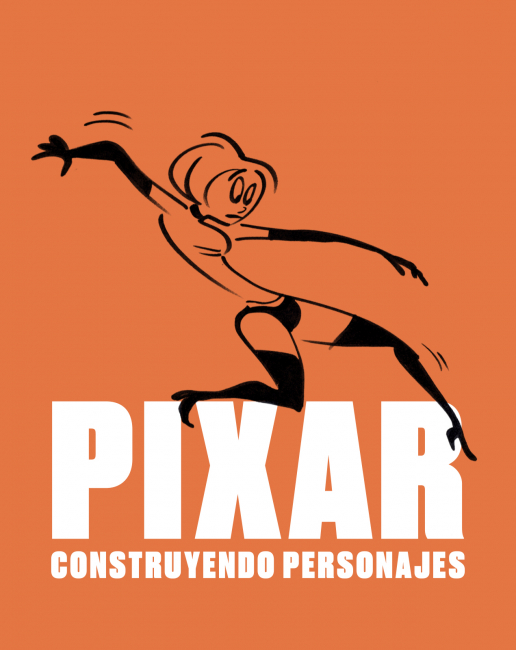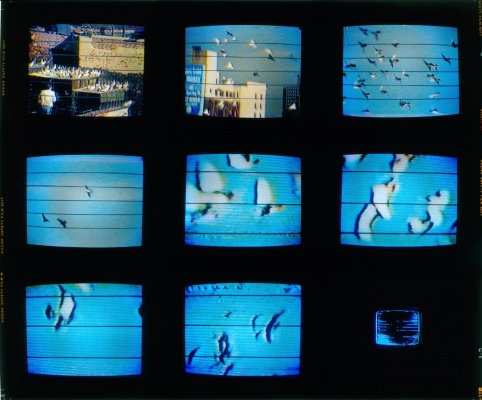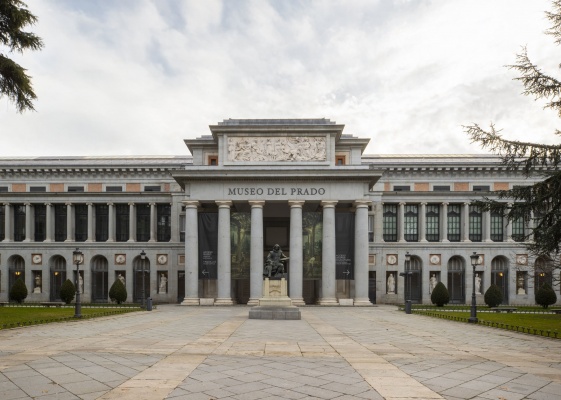Descripción de la Exposición
This year, Ars Electronica will be particularly benefiting from the extensive parks and large, new buildings on the JKU campus in Linz. They offer the best possible conditions for ensuring the necessary “physical distance” between visitors. In thematically oriented areas, visitors can sit down at a safe distance from one another and have the festival program served up here, so to speak. On a total of three stages the programme will include lectures and presentations, performances and concerts. In the university buildings located around the park, conferences will be held and exhibitions shown, which this year can only be visited as part of guided tours.
A fixed point of this year’s festival will again be “create your world”. Set in the midst of Linz’s “Kepler’s Garden”, a spacious area will present itself as an inspiring and naturally corona-compatible playground for children and parents who like to experiment. The “AIxMusic Festival” can also be experienced in “Kepler’s Garden” on the JKU campus. The format, first held in 2019 with the European Commission and a great success, will thus be continued in 2020. It is entirely dedicated to the networking of those innumerable centers that work on the applications and effects of AI research for the cultural sector and thus play an important role in communication and dialogue between research and society. Artistic projects and performances are also contributed by the Anton Bruckner Private University of Music, Drama and Dance. This time, the “AIxMusic Festival” will be closely linked with the STARTS program and the exhibition of the winners of the “STARTS-Prize 2020”. Without a doubt, one of the festival’s highlights will be the “Big Concert Night”, which will be characterized more than ever by Markus Poschner and the Bruckner Orchestra Linz’s joy of experimentation.
In addition to the festival center on the JKU campus, the festival will also take place in the city center of Linz. In the OK im OÖ Kulturquartier the Cyberarts exhibition will be shown as usual. A selection of the best media art works of the year 2020 will be presented and there will also be a focus on VALIE EXPORT. At this year’s Prix Ars Electronica, the Linz-born artist was honored as “Visionary Pioneer of Feminist Media Art” with a Golden Nica; at the festival, her formative artistic and feminist life’s work will be traced: There will be a “Special Lecture” at the OK as part of the Prix Ars Electronica Forum, Crossing Europe will show its own film program “Tribute VALIE EXPORT” and guided tours and lectures will be offered in the archive of the VALIE EXPORT Center in the Tabakfabrik. The Francisco Carolinum in the Upper Austrian Provincial Museum will host the exhibition “VALIE EXPORT. COLLECTION CARE” will be on display. Young, unconventional and provocative, this year’s campus format is presented at the University of Art Linz. Under the motto “THE WILD STATE”, a team of around 50 teachers, artists and students is working intensively on the development of various projects and exhibition formats. In addition to the traditional exhibition of “Interface Cultures”, a large show with various international partner universities will be part of the program. There will also be a façade projection on the main square, a symposium entitled “Unheimliche Freunde”, an Internet flea market – a discussion and bring-your-own-art format. US artist Lynn Hershman Leeson, winner of a Prix Ars Electronica 2020 Distinction in the “Interactive Art +” category, will be contributing a keynote address. Of course, the Ars Electronica Center and, in particular, Deep Space will also be a central festival venue. As at the OK and the University of the Arts, guided tours will be offered daily and must be booked in advance.
This time, however, Ars Electronica is not only taking place in Linz, but in 120 “Kepler’s Gardens” around the globe. For the first time, the festival is testing itself as a digital travel agency that brings visitors from all over the world to “gardens between art, technology and society” that are as fascinating as they are inspiring. Destinations are in abundance; there are “Ars Electronica Gardens” in Barcelona (Institut Ramon Llull, Hangar, UOC – ISEA Barcelona, NewArtFoundation – BEEP Collection, OFFF Barcelona, Espronceda – Institute of Art & Culture), in Brussels (BOZAR), in Tokyo (Japan Media Arts Festival), in Boston (MIT Media Lab), in Buenos Aires (National University of Tres de Febrero, Muntref Centro de Arte y Ciencia), in Seoul (K’ARTS Korea National University of Arts), in Basel (HeK Haus der elektronischen Künste), in Athens (Onassis Stegi), in Silicon Valley (Open Austria), in Johannesburg (Fakugesi Festival), in Los Angeles (UCLA), in Auckland (University of Auckland), in Vilnius (Vilnius Academy of Arts) and in Amsterdam (Waag). At all these locations, artists, scientists, developers, entrepreneurs and activists will be addressing the question of how the “new” world is to – or with? – Corona should look like.
---------------------------------------------------
MAC colabora en proyecto transdisciplinar presentado en Festival Ars Electrónica 2020.
Entre el 9 y el 13 de septiembre Nicolás Spencer, Víctor Mazón, Alessandra Burotto, Valentina Montero, Gerd Sielfeld, Alfredo Prieto y Paula López Wood -parte del Grupo de Investigación Terra Australis Ignota- presentarán Achaeoscillator Toward incorporeal forms of sensing listening and gaze, uno de los cinco proyectos nacionales seleccionados por este prestigiado festival austríaco
El proyecto cuenta con la colaboración del Museo de Arte Contemporáneo a través de su Unidad MediaMAC/Anilla y corresponde a parte de lo que será la exhibición Terra Australis Ignota, que se realizará en 2021 en la sede Parque Forestal del museo.
Se trata del proyecto Achaeoscillator Toward incorporeal forms of sensing listening and gaze, liderado por el artista Nicolás Spencer, que se enmarca en una instancia de investigación que partió el año 2015 y que será exhibida en el MAC a finales de marzo del 2021 por el grupo de investigación Terra Australis Ignota. Este grupo está conformado además, por el artista español Víctor Mazón y el geólogo Gerd Sielfeld, el arqueólogo Alfredo Prieto, la escritora Paula López Wood y las curadoras Alessandra Burotto y Valentina Montero y forma parte de un grupo más amplio de investigación llamado Terra Ignota.
Achaeoscillator Toward incorporeal forms of sensing listening and gaze fue uno de los cinco seleccionados por Ars Electronica en el marco del convenio que el festival suscribió en 2018 con el Ministerio de las Culturas, las Artes y el Patrimonio y la Dirección de Asuntos Culturales (DIRAC) del Ministerio de Relaciones Exteriores, con el fin de promover la circulación internacional de las artes mediales locales.
Por más de cuatro décadas, el Festival Ars Electronica ha proporcionado un escenario anual para artistas y científicos interesados en los fenómenos sociales y culturales derivados de los cambios tecnológicos, con especial interés en el arte electrónico y la teoría de los medios. Como consecuencia de la pandemia por Covid-19, este año Ars Electronica se enmarca en el título En los Jardines de Kepler: un viaje global mapeando el “nuevo” mundo y se llevará a tanto en el parque de la Universidad Johannes Kepler en Linz y a través de una plataforma digital.
Achaeoscillator Toward incorporeal forms of sensing listening and gaze
Aqueoscilador Hacia formas incorpóreas de sentir la escucha y la mirada
La obra es una instalación interactiva inmersiva AR/VR que tiene como protagonista a las drásticas condiciones climáticas de la isla Cabo de Hornos, la más austral del mundo. En síntesis, una representación virtual del fin del mundo, o bien del comienzo de las Américas.
Terra Australis Ignota Group Research (TAIGR) es un grupo de investigación formado en 2015 por artistas, científicos, curadores y productores chilenos que de manera colaborativa exploran el territorio y su memoria geológica, histórica y ancestral para configurar nuevos relatos en torno a la región austral de Magallanes y la península Antártica, interesándose en fenómenos aparentemente inertes, como el viento, las rocas y el hielo, verdaderos testigos del paso del tiempo y portavoces para las actuales generaciones.
“En 2018 viajamos a la isla continental más austral del mundo antes de la Antártida que es Cabo de Hornos. Un lugar donde el aire, el agua y la tierra se unen, donde se desvanece la línea que divide el mar, la tierra y el aire. Comenzamos un viaje a esta isla para escuchar cómo dialogan estos elementos, para intentar amplificar su sonido y con él sus historias geológicas e históricas. Para ello instalamos un instrumento que llamamos oscilador de viento, que consiste en una cuerda de 888 cm de longitud que resuena con el viento de la isla. La estructura está diseñada para resonar con el viento y transmitir la vibración y el sonido a muchos kilómetros de distancia a bajas frecuencia”, explica Nicolás Spencer.
El proyecto se presenta en la edición 41° edición de Ars Electrónica centrándose en la experiencia auditiva y en el material audiovisual de las expediciones realizadas. “Vamos a interpretar los sonidos emitidos por esta escultura los cuales serán traducidos en una isla virtual que se conecta y activa con la isla, a través de datos meteorológicos tomados a tiempo real desde la isla”, precisa Nicolás Spencer.
En el marco de este Festival, la interpretación de testigos estará a cargo del arqueólogo Alfredo Prieto y del geólogo Gerd Sielfeld quienes buscarán conexiones entre las comunidades ancestrales que navegaron miles de años por la zona y las capas tectónicas que determinaron la fisonomía del territorio habitado. Por su parte la escritora Paula López Wood crea un relato ficción a partir del viaje entre Punta Arenas y la isla Cabo de Hornos, en tanto el artista español Víctor Mazón mostrará el enfrentamiento entre un detector de micro-oscilación con la radio natural, mientras que Alessandra Burotto, coordinadora de MediaMAC/Anilla abordará el impacto que este tipo de proyectos ejercen sobre las prácticas curatoriales y las nuevas museologías críticas.
Cinco proyectos nacionales
Esta versión del festival tiene como temática In Kepler’s Gardens – A global journey mapping the “new” world (“En los Jardines de Kepler – Un viaje global mapeando el «nuevo» mundo) una instancia que busca reflexionar en torno a los conceptos de autonomía, democracia, ecología, tecnología, realidad, incertidumbre y humanidad. La participación chilena cuenta, además, con los proyectos Valparaíso Brushwood Garden de la Universidad de Valparaíso y el Centro de Investigaciones Artísticas; Mutations de la Facultad de Arte y Arquitectura de la Universidad Austral; A Fungus Garden del Museo del Hongo; y SPACE / EARTH /WATER TRIAD del colectivo Prisma Arte/Ciencia/Tecnología.
“Creemos importante y significativo que la mayoría de los proyectos seleccionados son regionales y somos conscientes de la urgencia de generar instancias de investigación y articulación entre ciencia y sociedad. El arte cumple un rol muy importante en este propósito. Se necesitan con urgencia nuevas perspectivas y narrativas para entender sistemas complejos que suelen involucrar ecosistemas, sociedad y diversos sistemas de lectura y así comunicarlos a una audiencia más amplia”, destaca Nicolás Spencer.
Este proyecto es una cooperación entre el Ministerio de las Culturas, las Artes y el Patrimonio Ministerio de Relaciones Exteriores; Gobierno de Chile; Ars Electronica. El Dr. Alfredo Prieto está patrocinado por la Universidad de Magallanes. El viaje de investigación a Cabo de Hornos 2018 fue apoyado por el Ministerio de las Culturas, las Artes y el Patrimonio, BKA (Bundeskanzleramt der Republik Österreich), Embajada de Austria en Chile, SKE, Conaf, Weltmuseum Viena, Transbordadora Austral Broom and Aerovías DAP.

Exposición. 26 nov de 2020 - 21 mar de 2021 / CaixaForum Sevilla / Sevilla, España

Exposición. 09 sep de 2020 - 12 sep de 2020 / Espronceda Center for Art & Culture / Barcelona, España

Exposición. 08 may de 2025 - 14 sep de 2025 / MNAC - Museu Nacional d'Art de Catalunya / Barcelona, España

Formación. 30 oct de 2025 - 11 jun de 2026 / Museo Nacional del Prado / Madrid, España